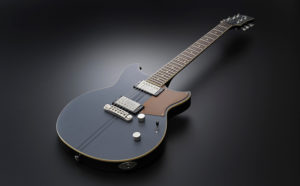Electric Guitar History
The first electrically amplified stringed instrument to be marketed commercially was designed in 1931 by George Beauchamp, the general manager of the National Guitar Corporation, with Paul Barth, who was vice president. The maple body prototype for the one-piece cast aluminium “frying pan” was built by Harry Watson, factory superintendent of the National Guitar Corporation. Commercial production began in late summer of 1932 by the Ro-Pat-In Corporation (Electro-Patent-Instrument Company), in Los Angeles, a partnership of Beauchamp, Adolph Rickenbacker (originally Rickenbacher), and Paul Barth. In 1934, the company was renamed the Rickenbacker Electro Stringed Instrument Company. In that year Beauchamp applied for a United States patent for an Electrical Stringed Musical Instrument and the patent was later issued in 1937.
By early-mid 1935, Electro String Instrument Corporation had achieved mainstream success with the A-22 “Frying Pan” steel guitar, and set out to capture a new audience through its release of the Electro-Spanish Model B and the Electro-Spanish Ken Roberts, which was the first full 25″ scale electric guitar ever produced.
The Electro-Spanish Ken Roberts was revolutionary for its time, providing players a full 25″ scale, with easy access to 17 frets free of the body. Unlike other lap-steel electrified instruments produced during the time, the Electro-Spanish Ken Roberts was designed to play standing vertical, upright with a strap. The Electro-Spanish Ken Roberts was also the first instrument to feature a hand-operated vibrato as a standard appointment, a device called the “Vibrola,” invented by Doc Kauffman. It is estimated that fewer than 50 Electro-Spanish Ken Roberts were constructed between 1933 and 1937; fewer than 10 are known to survive today.
The solid-body electric guitar is made of solid wood, without functionally resonating air spaces. The first solid-body Spanish standard guitar was offered by Vivi-Tone no later than 1934. This model featured a guitar-shaped body of a single sheet of plywood affixed to a wood frame. Another early, substantially solid Spanish electric guitar, called the Electro Spanish, was marketed by the Rickenbacker guitar company in 1935 and made of Bakelite. By 1936, the Slingerland company introduced a wooden solid-body electric model, the Slingerland Songster 401 (and a lap steel counterpart, the Songster 400). More details

